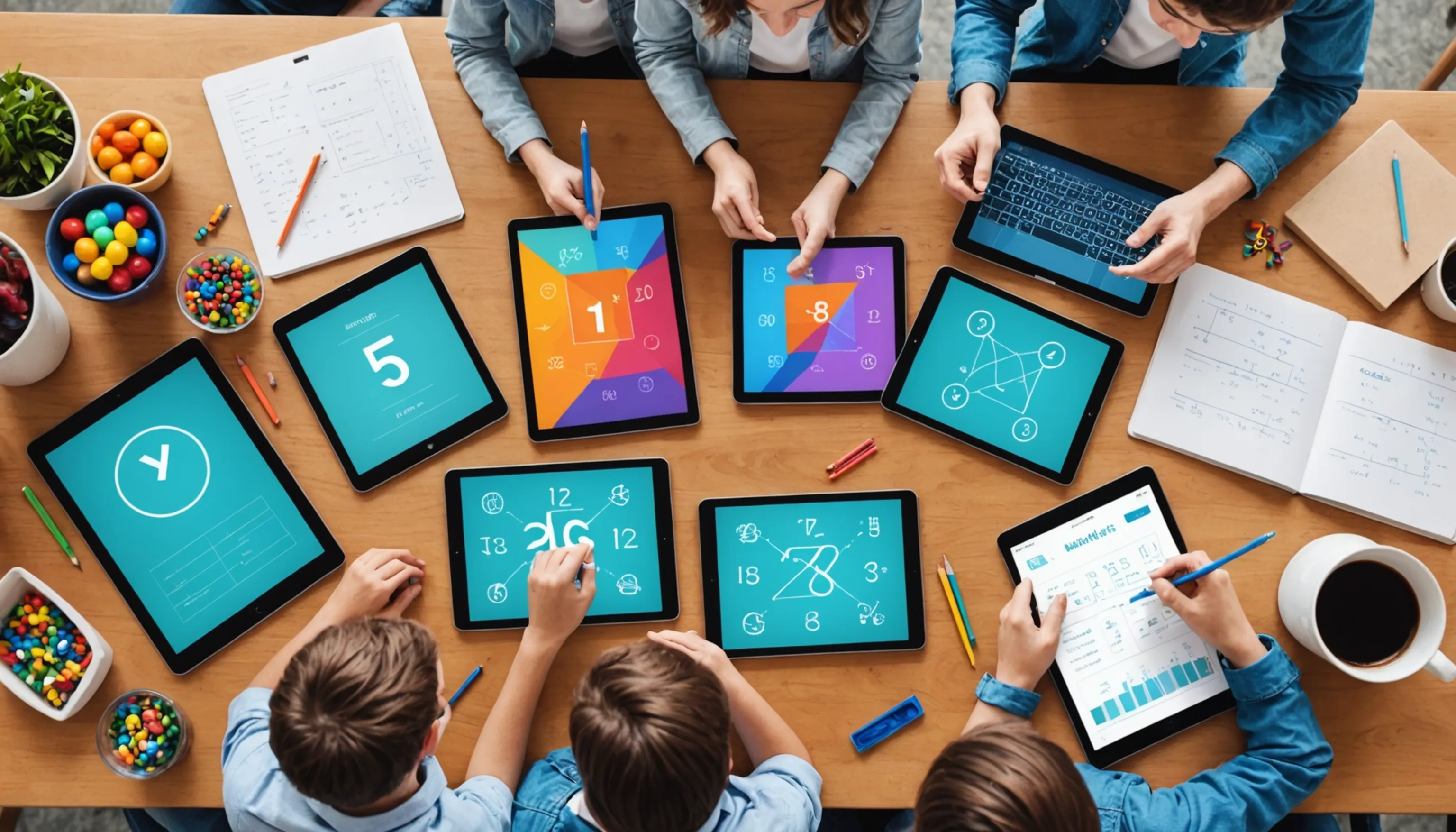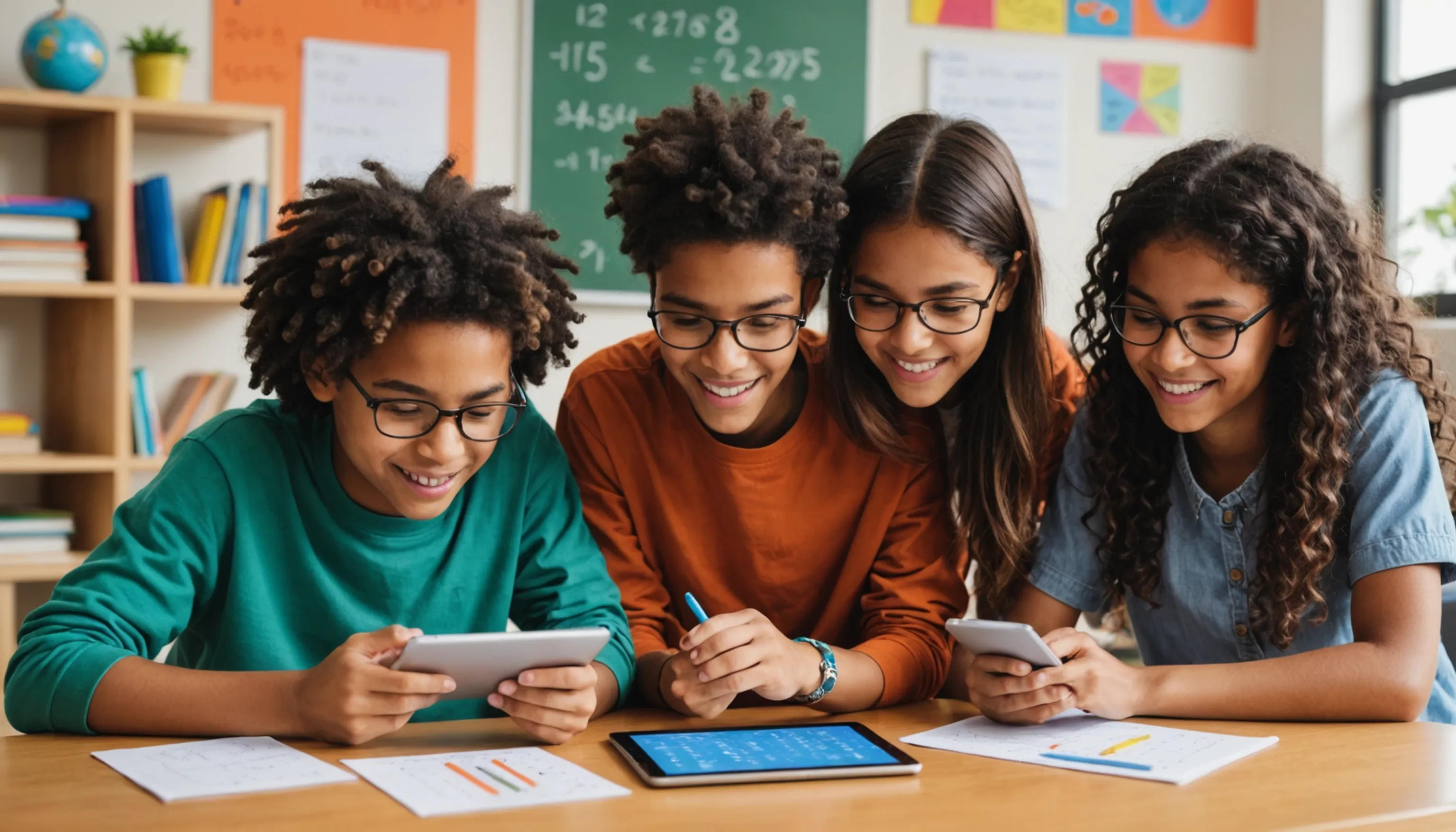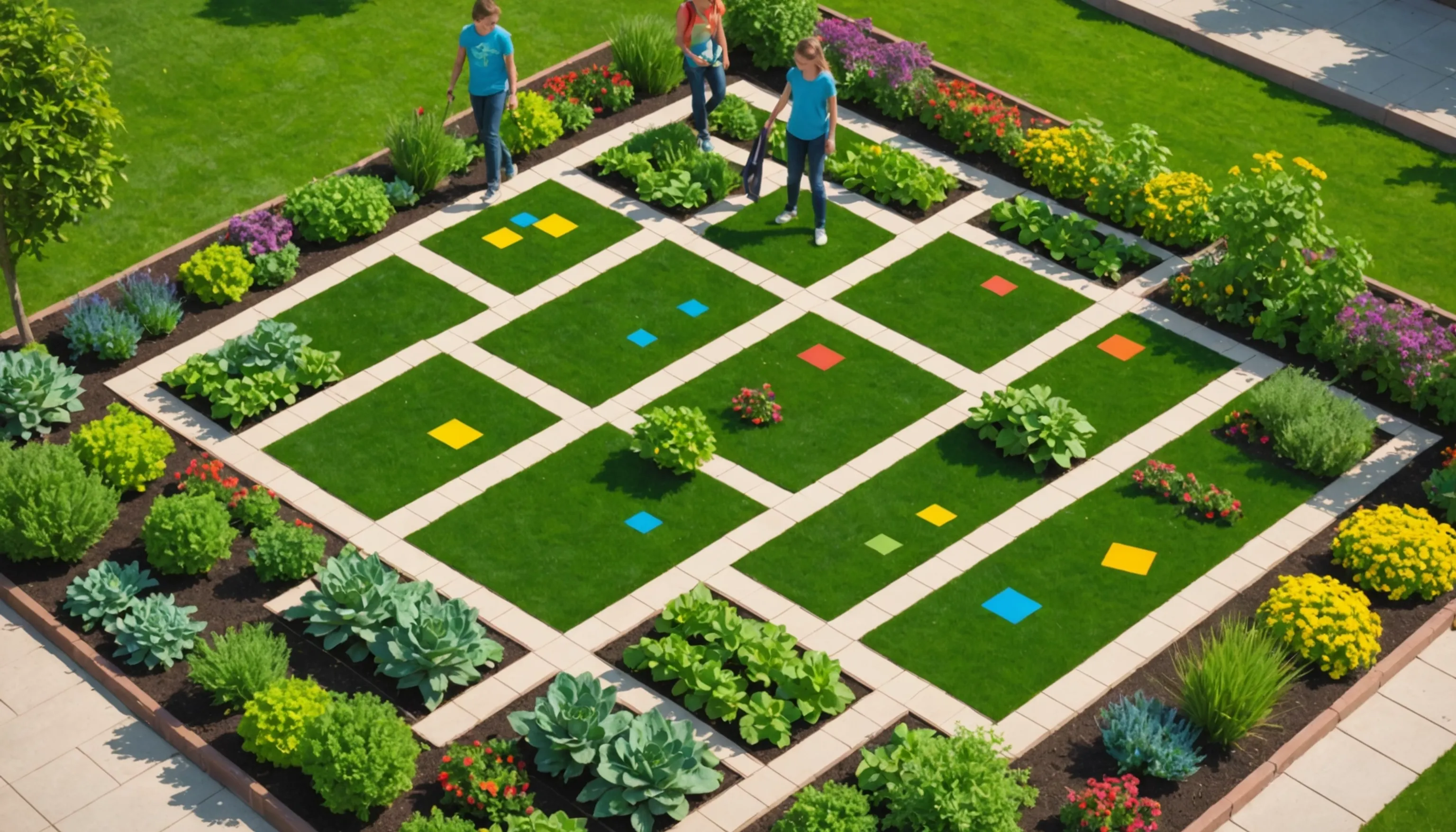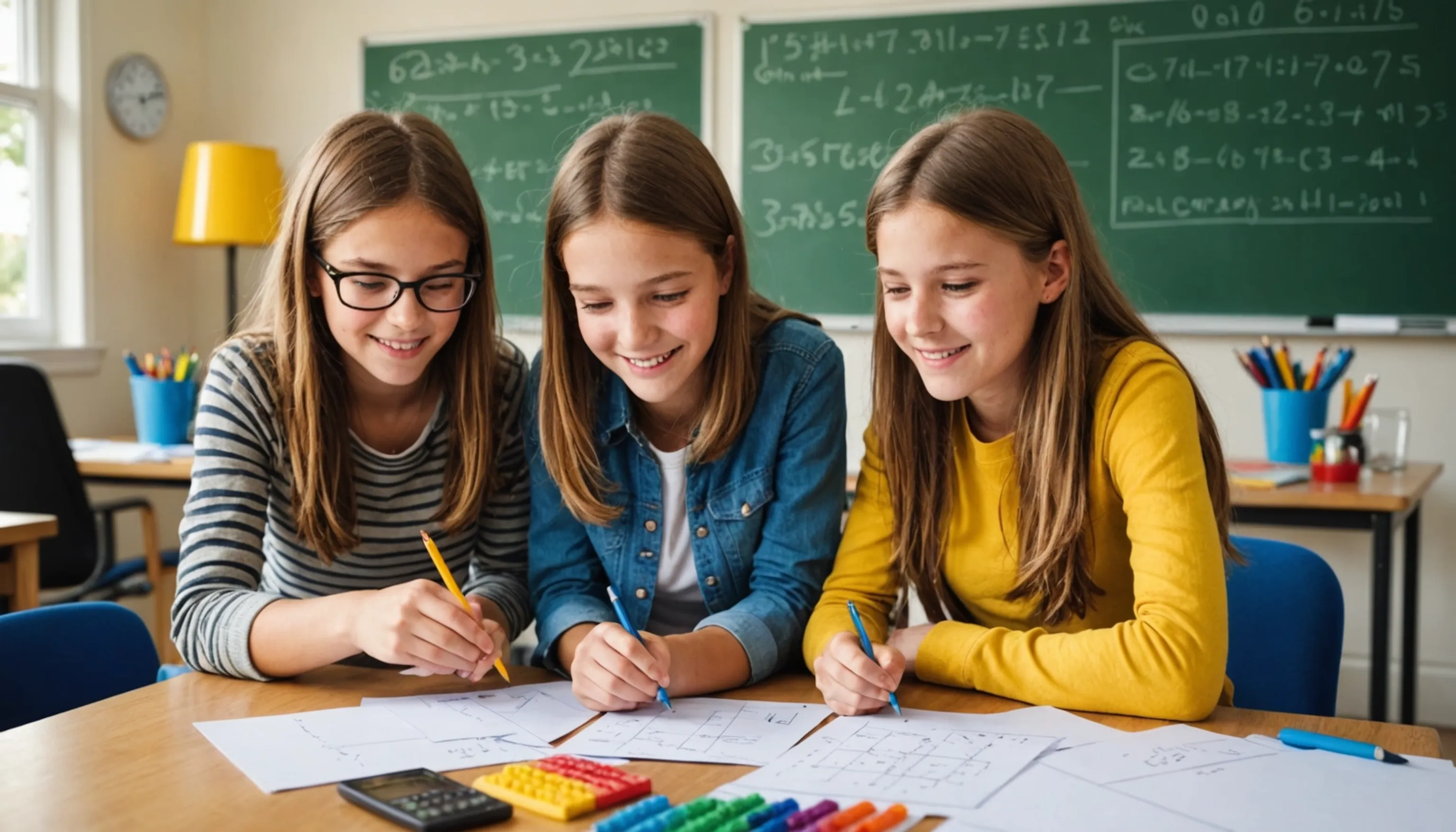Creative After-School Math Ideas for Kids
 HvWHenry van Wagenberg
HvWHenry van Wagenberg
Creative After-School Math Ideas for Teens
Finding creative after-school math ideas for teens can make learning more engaging and enjoyable. One effective approach is to integrate math into everyday activities, turning mundane tasks into fun challenges. For example, you can encourage teens to calculate discounts while shopping or estimate the time needed for a trip, promoting critical thinking.
Additionally, using technology to access interactive math games can captivate their interest. Websites and apps offer a variety of math-related games that reinforce concepts while providing a competitive edge. Engaging projects can also involve teamwork, making learning a social experience.
Incorporating Math into Everyday Activities
Incorporating math into everyday activities is a fantastic way to engage teens and reinforce their learning in a practical context. One effective method is to involve them in cooking or baking. This can be both enjoyable and educational, as it requires measuring ingredients and understanding proportions. For instance, you might ask them to double a recipe, which helps them practice multiplication and fractions.
Another great idea is to involve teens in budgeting for family outings. This can include calculating costs, comparing prices, and managing money, which fosters real-world math skills. You could create a fun challenge where they plan a day out with a set budget, ensuring they stay within limits while maximizing fun.
Shopping trips can also serve as a math lesson. Ask them to calculate the total cost of items in the cart, apply discounts, or estimate the final bill before reaching the checkout. This not only sharpens their arithmetic skills but also enhances their decision-making abilities.
Additionally, encourage them to track their favorite sports statistics or analyze data from games. This can lead to discussions about averages, percentages, and data interpretation. By embedding math into daily life, you make learning relevant and enjoyable, demonstrating its importance beyond the classroom.

Using Technology for Fun Math Games
Using technology for fun math games can significantly enhance teens' engagement and enjoyment of mathematics. With the proliferation of smartphones, tablets, and computers, various platforms offer interactive and entertaining ways to practice math skills. These games not only make learning enjoyable but also provide instant feedback, helping students recognize areas for improvement.
One popular option is math-based applications such as Prodigy or Kahoot!, where teens can compete against friends or classmates in real-time math challenges. These platforms often incorporate gamification elements, such as rewards and levels, encouraging students to stay motivated while they learn.
Online math games like Math Playground and Coolmath Games offer a wide range of activities, from puzzles to strategy games that require critical thinking and problem-solving. These games can be tailored to different skill levels, ensuring that every teen can find something suitable and challenging.
Additionally, virtual classrooms and online platforms like Zoom can host math game sessions where groups of teens can collaborate and compete in a fun, social environment. Incorporating technology not only makes math more accessible but also helps develop digital literacy skills that are crucial in today’s world.
Ultimately, using technology for fun math games can transform the way teens perceive math, making it less intimidating and more relatable, while fostering a love for learning.
Engaging Math Projects for Teens
Engaging math projects for teens can spark creativity while reinforcing important concepts. One exciting project involves creating a budget for a mock event, where teens plan expenses for a party or trip. This helps them apply addition, subtraction, and percentages in a real-world context.
Another idea is to design a scaled model of their dream home, incorporating geometry and measurement skills. Teens can explore area, volume, and proportions while having fun with design.
These projects not only make math relevant but also encourage teamwork and critical thinking, enhancing their overall learning experience.

Building a Math-Themed Garden
Building a math-themed garden is a creative and engaging way to incorporate math concepts into a hands-on project for teens. This idea blends nature with mathematics, allowing students to explore geometry, measurement, and spatial reasoning while nurturing plants. To start, teens can design the layout of the garden, using geometric shapes such as circles, squares, and triangles to define different sections for various plants.
As part of the planning process, they can calculate the area needed for each type of plant and determine how many will fit in their designated spaces. This activity reinforces their understanding of area and perimeter while making decisions about plant spacing.
Teens can also incorporate patterns and symmetry into their garden design, enhancing their appreciation for aesthetics in mathematics. For instance, they could plant flowers in repeating color patterns or create symmetrical arrangements to create visual interest.
Additionally, measuring the growth of plants over time offers a practical application of data collection and analysis. Students can keep a journal documenting plant heights, growth rates, and other observations, allowing them to create graphs and charts to visualize their findings.
Incorporating math into a gardening project not only makes learning fun but also fosters responsibility and teamwork. This hands-on experience can help teens see the relevance of math in everyday life and inspire a lifelong interest in both mathematics and nature.
Creating a Math Art Project
Creating a math art project is an exciting way for teens to explore the intersection of mathematics and creativity. This project allows students to express their artistic talents while reinforcing their understanding of mathematical concepts. One popular idea is to use geometric shapes to create intricate designs, such as mandalas or tessellations. By exploring symmetry and patterns, teens can engage with geometry in a visually captivating way.
For instance, they can start by drawing a series of shapes that repeat and connect, such as triangles, squares, or hexagons. As they experiment with different arrangements, they learn about angles, congruence, and transformations. Incorporating color can add an extra layer of creativity, encouraging them to think about color theory and contrast.
Another engaging project is creating fractal art, which introduces students to the concept of self-similarity and infinite patterns. Using software or graphing calculators, they can generate fractals like the Mandelbrot set or Sierpiński triangle, translating mathematical equations into stunning visual representations.
Furthermore, students can present their math art projects to peers, explaining the mathematical principles behind their designs. This not only enhances their understanding but also builds confidence in public speaking and presentation skills.
By combining math and art, teens can gain a deeper appreciation for the beauty of mathematics, making learning enjoyable and inspiring. This approach helps demonstrate that math isn't just about numbers and equations; it's also a form of creative expression.
Exploring Math through Cooking and Baking
Exploring math through cooking and baking is a delicious way to engage teens with mathematical concepts. When preparing recipes, they encounter essential skills like measuring ingredients, which reinforces fractions and decimals. For example, doubling a recipe teaches multiplication, while halving it introduces division.
Understanding ratios and proportions is also crucial when adjusting recipes for larger or smaller servings. Additionally, cooking can involve time management, as teens learn to estimate cooking times and sequence tasks efficiently. By incorporating math into culinary activities, students can see the practical applications of math in everyday life while having fun in the kitchen.
Measuring Ingredients for Recipes
Measuring ingredients for recipes is a hands-on way to introduce teens to essential math skills in a fun and practical context. Cooking requires precise measurements, which provides a real-world application of fractions, decimals, and conversions. For instance, when a recipe calls for 1/4 cup of sugar, students must understand how to measure that accurately using measuring cups.
Teens can practice converting between different units, such as tablespoons to cups or ounces to grams, reinforcing their understanding of equivalence and ratios. This is particularly useful when adapting recipes from different countries, where measurement systems may vary.
Encouraging teens to double or halve recipes can also enhance their math skills. For example, if a recipe serves four and they want to serve eight, they’ll need to multiply each ingredient by two. Conversely, if they’re cooking for just two, they’ll divide each amount by two. This exercise not only strengthens their multiplication and division skills but also emphasizes the importance of accuracy in cooking.
Additionally, measuring ingredients allows students to explore concepts like volume and weight. They can compare dry and liquid measurements, gaining a better understanding of how different ingredients behave when mixed. By engaging in these hands-on activities, teens will see the relevance of math in everyday life, making it both enjoyable and educational.
Ultimately, measuring ingredients in the kitchen can inspire a love for both cooking and mathematics, showing that they can complement each other beautifully.
Understanding Ratios and Proportions in Cooking
Understanding ratios and proportions in cooking is crucial for teens, as it enhances their mathematical skills while they prepare delicious meals. Ratios help in comparing the quantities of different ingredients in a recipe, while proportions allow for the adjustment of these quantities when scaling recipes up or down. Here’s how teens can apply these concepts in the kitchen:
- Identifying Ratios: When following a recipe, teens can learn to identify the ratio of ingredients. For example, if a recipe calls for 2 cups of flour to 1 cup of sugar, the ratio is 2:1.
- Scaling Recipes: If they want to double a recipe, they’ll need to apply proportions. For instance, if the original recipe serves 4, and they want to serve 8, they would double each ingredient, maintaining the same ratios.
- Creating Custom Recipes: Teens can experiment by creating their own recipes using ratios. For example, they might decide on a 3:1 ratio of fruit to yogurt for a smoothie, allowing them to customize flavors while practicing math.
- Analyzing Nutrition: Understanding ratios can also help teens analyze nutritional content. They can compare the ratio of carbohydrates to proteins in different meals, helping them make healthier choices.
By engaging with ratios and proportions in cooking, teens can see the practical applications of math in everyday life. This not only enhances their culinary skills but also empowers them to approach math with confidence and creativity.
